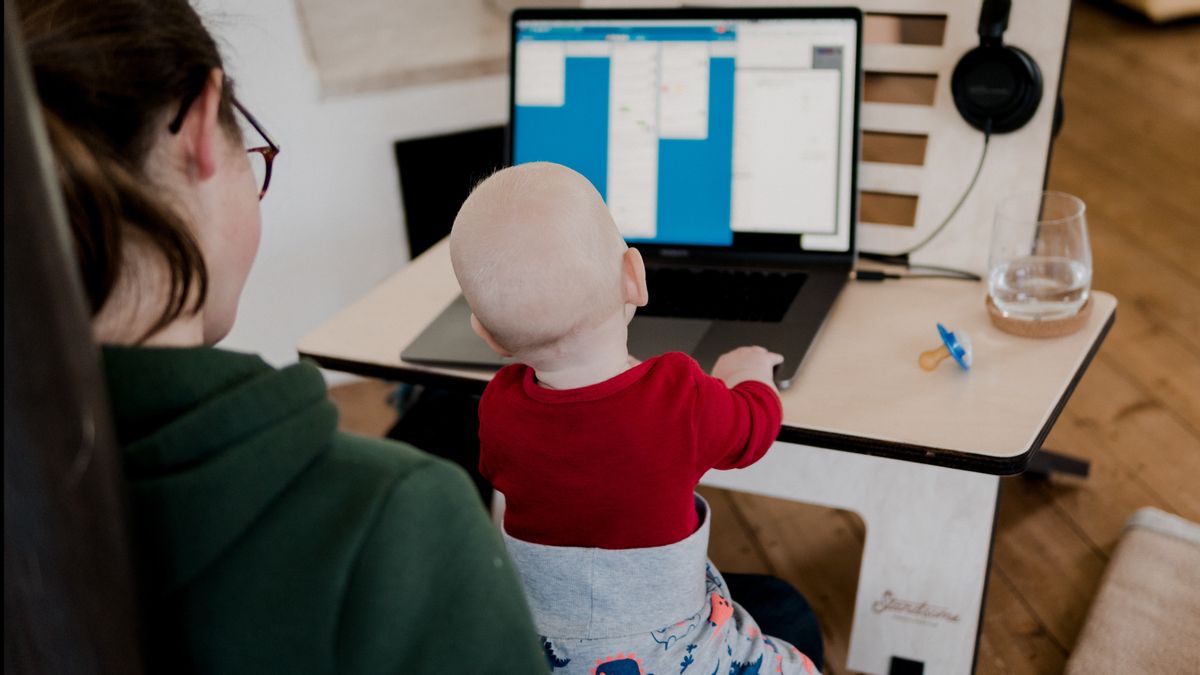JAKARTA - The pandemic era has made children closer to technology. Smartphones are no longer used as a means of entertainment or communication only. Now, this communication tool is also used as a medium for online learning and to find additional information.
For parents, this condition can no longer be complained about. Despite the increasing frequency of bad news about cybercrime, children and smartphone technology are inseparable. It's not that there are no ways to accompany and look after children during activities in the virtual world.
Google's Online Safety Education Lead, Lucian Teo, said that his party had collaborated with the Trust and Safety Research team to conduct research on parents in the Asia-Pacific and Latin America regions.
"From this research, he found that parents of children who attend online schools feel more worried about online security than those whose children attend school as usual (offline, -red)," explained Luciana Teo in a release shared on the Google blog, Monday, 8 February.
Therefore, Luciana Teo also shared three tips to overcome parents' biggest concerns regarding child safety in cyberspace. The three tips include:

According to a Trust and Safetty Research survey, the privacy and security of children's information is the biggest concern of parents. Parents claim to be worried about the risk of fraud or hacking into children's accounts.
To overcome this, there are two things that can be done as a precaution. First, teach children to create strong passwords that are not easy to guess. Avoid simple passwords that use a combination of names, birthdays, or even favorite characters.
Second, use a platform that has a good reputation for user security. For example, for email services, parents can take advantage of the Gmail service. Through this service owned by Google, parents will receive a security filter that can detect phishing e-mails.
2. Know the Circle of Children's Online CommunityIt must be admitted that social isolation is a condition that is difficult to overcome from the impact of the COVID-19 pandemic. As for children, this situation changes their communication patterns, from face-to-face to online. Whether using voice chat when playing games, to engaging in fast-growing virtual communities on social media.
In this case, parents must realize that this communication channel can also be used by unknown parties. In fact, people with bad intentions can freely contact the children. Therefore, it is important to know who the child is talking to and what kind of community the children are doing online.
For that, Teo suggested two steps that could be tried. First, talk to your children about the games they play or the videos they watch, as well as the people involved around them.
This needs to be done by parents. What's more, the Trust and Safety Research findings reveal that more than 70 percent of parents in Asia-Pacific are not confident enough that their child will tell about conditions online.
This is of course a separate task for parents to convince children. So, children can trust that parents can guide and protect them in the online environment.
Second, pay attention to the content and online communication patterns that take place in the games that children play. Parents even have to strictly forbid it if they feel that the game being played is potentially dangerous. For example, a type of game that is supported by online communication features and has inappropriate content.
3. Show child age appropriate contentThis is the third biggest concern facing parents in Asia-Pacific and Latin America. Luckily, there are now family safety features available from Google that can be used to help protect children from inappropriate types of content.
This feature is like SafeSearch on the Google search engine. This feature can help filter out explicit content in search results. Start an image, video, or website. SafeSearch is specially designed to block inappropriate search results.
The second feature is Family Link. This platform allows parents to add filters to Google Search, block websites, and give access to authorized people. Apart from that, Family Link also provides a feature to track the location of a child's device.
Third, namely optimizing the parental control features in YouTube Kids. This feature allows parents to limit usage time. In addition, parents can also set the types of video content that can appear on the child's cellphone screen.
Previously, Google campaigned the hashtag #TangkasBerinternet as part of the commemoration of World Safe Internet Day. From this campaign, Google also launched the Internet Agile Family program with educational videos related to parent-child communication to create a safer and healthier digital ecosystem.
The English, Chinese, Japanese, Arabic, and French versions are automatically generated by the AI. So there may still be inaccuracies in translating, please always see Indonesian as our main language. (system supported by DigitalSiber.id)













